Finale of ultra-long-range artillery
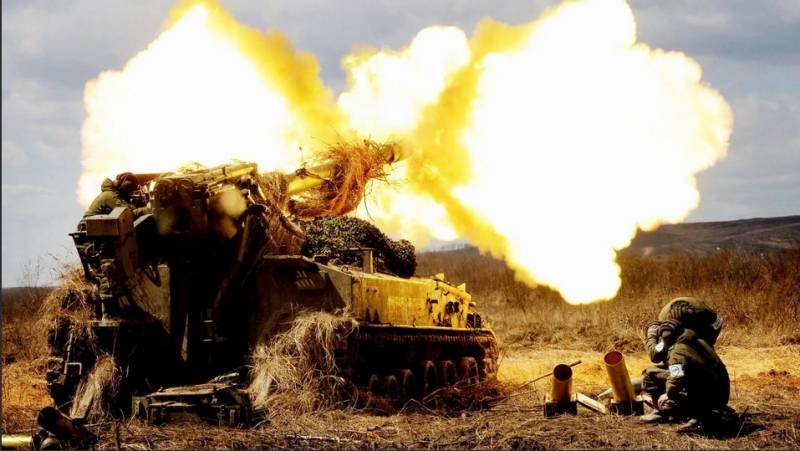
On March 23, 1918, the pavements of Paris shook under the feet of Parisians from a strong explosion. Habitually turning their eyes to the sky, to their surprise, the Parisians did not find any explosions of anti-aircraft shells or slowly floating German Zeppelins there. Airplanes of that time could not carry bombs of a decent weight. The front line was almost 90 kilometers from Paris, that is, the artillery shelling was out of the realm of fantasy. From Jules Verne and Pascal Grousset's (André Laurie) science fiction novel The 500 Million Begums, to be precise.
There, in the novel, the German Doctor Schulze built a huge cannon with a range of 40 km in the bowels of his city of Stalstadt. This cannon's shells, equipped with secondary launchers, could bombard any city with hundreds of incendiary shells. In general, to all the inventions of mankind predicted by Jules Verne, we also add cluster munitions with incendiary submunitions.
But in Paris in 1918 it was no laughing matter. Intelligence very quickly figured out that the Germans (specifically the Krupp concern) were able to produce an ultra-long-range 210-mm cannon and began shelling Paris with it.
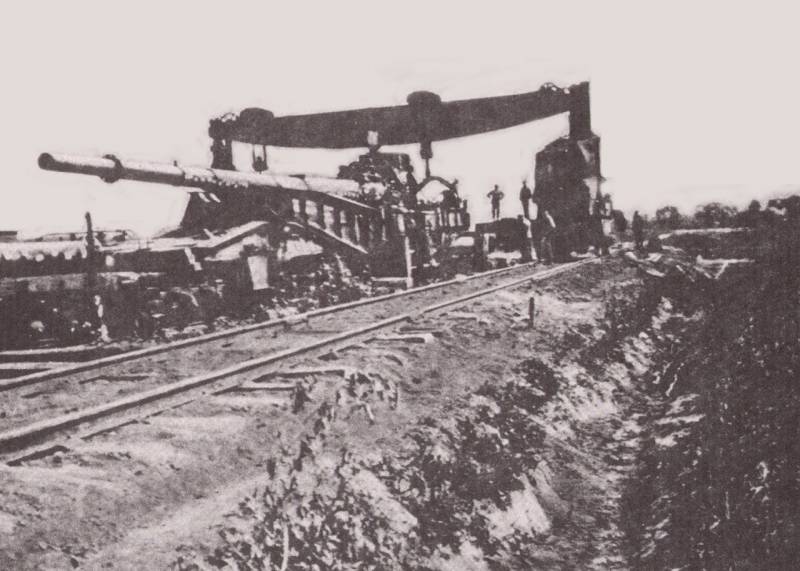
The Krupp gun had a barrel length of 130 calibers, that is, almost 30 meters, and fired projectiles weighing 118 kg at a distance of up to 130 km.
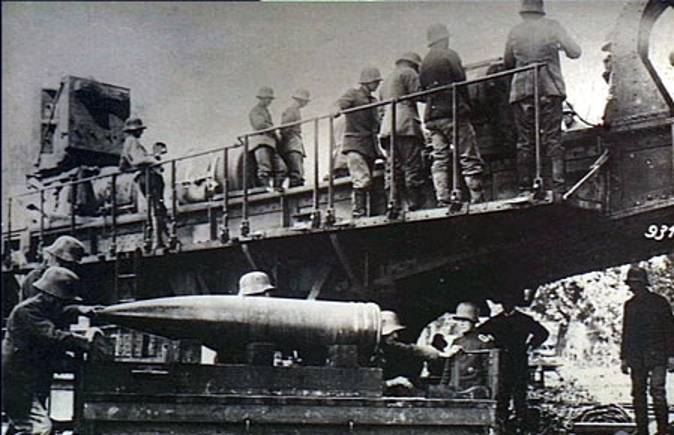
The weight of the powder propellant charge is 200-250 kg, the mass of the explosive in the projectile is 7 kg. The mass of the installation was 256 tons, of which the barrel accounted for about 128 tons.
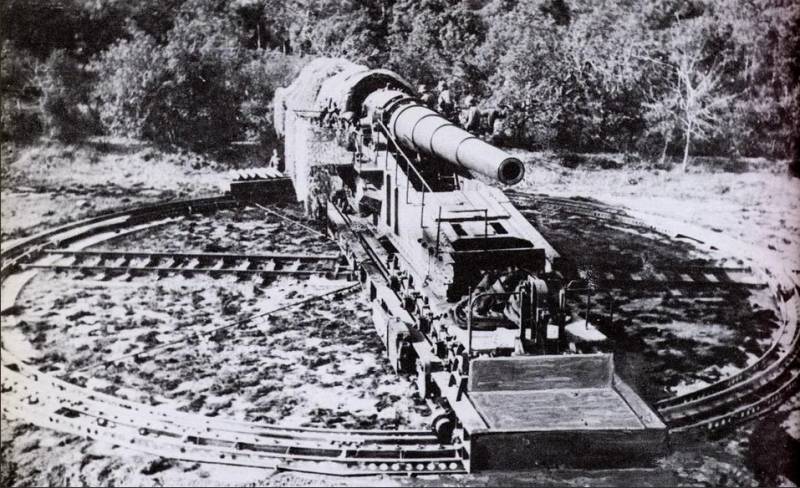
The gun fired from a special concrete platform with a ring rail for horizontal aiming. The weight of the gun, including its concrete base, was close to 750 tons.
In general, it’s a terrifying thing, like basically everything that Krupp’s military factories produced.
However, it turned out that everything was not as scary as it seemed at first. Until August 7, 1918, the Germans fired 367 shells, of which two-thirds hit the city center and a third scattered throughout the suburbs of Paris. Almost four hundred huge shells killed 256 Parisians and injured more than 600 people.
And most importantly, not a single military target was hit.
For five months, the “Kaiser Wilhelm Trumpet,” as this gun was nicknamed, was a weapon of terror against the civilian population of Paris. The results of the application were more than scanty, so it is not surprising that in August the Germans dismantled the cannon, took it to Germany and melted it down.
Naturally, following the Germans, the French, British, Italians and Americans began to respond to the creation of ultra-long-range artillery. But these works are generally worthy of a separate article, because there the imagination went wild quite well.
What is in Russia? They didn’t build such monsters in Russia, but they wanted to in Soviet Russia. There was something flawed in trying to “catch up and overtake” when there was nothing to catch up with, and even more so to overtake. But there was a desire.
Soviet Russia had a lieutenant general of the Russian Imperial Army, Vasily Trofimov. A simple general, but with a very bright head. Winner of the Small and Large Mikhailov Prizes.
The Mikhailovsky Prize was awarded in 1845-1916 for the best works or inventions in the field of artillery. Large – 1500 rubles, Small – 500 rubles. The money came from a fund created by graduates of the Mikhailovsky Artillery School.
General Trofimov in 1918 proposed the establishment of a Commission for Special Artillery Experiments (KOsArtOp) under the People's Commissariat for Military Affairs of the RSFSR. The commission would be engaged in artillery development, including research into the possibilities of creating ultra-long-range guns. And such a commission was created. Trofimov’s authority attracted such prominent artillery specialists as N.F. Drozdov, I.P. Grave, G.A. Zabudsky, F.F. Lander, V.I. Rdultovsky.
That is, there were heads in Russia. There was also a theoretical basis, the same Trofimov wrote many works on the theory of artillery, including the following:
“On the calculation of ultra-long-range shooting trajectories” (1919)
"The Ballistic Side of Firing at High-Flying Targets" (1919)
“Our ballistic solution to the problem of a long-range gun” (1921)
The problem lay elsewhere. The creation of ultra-long-range guns required technologies and means that at that time Soviet Russia not only did not have, but did not foresee. And the Kosartop professionals solved the problem this way: we will make them with what we have, since the Motherland needs such guns.
And they did. The basis was taken from the 356-mm guns of the Obukhov plant for the Izmail-class battlecruisers, which the state could not complete for many reasons.
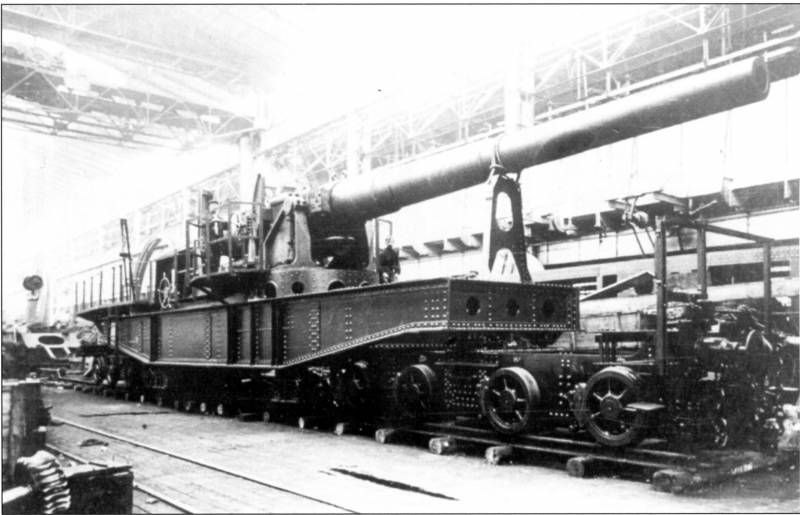
For these guns, new beltless sub-caliber 356/203-mm projectiles were designed, which were ordered to be produced by the Perm plant. The order was placed in 1920, and in June 1921 the customer received the first 15 shells out of 70 ordered.
The first shootings took place in June 1924. 203-mm shells weighing 110 kg flew out of the barrel at a speed of 1 m/s and flew over a distance of 250 km. The distance is not Kruppian, but nevertheless, the result was quite good. The downside was the large dispersion, which did not allow us to talk about proper accuracy.
It turned out that the cannons created by Kosartop could fire exclusively at areas. There was no talk of accurate shooting.
For two years, Kosartop specialists tried to do something to increase shooting accuracy and reduce the dispersion of shells, but alas, work on ultra-long-range artillery for the Soviet army was stopped in 1926, when the head of the commission, General Trofimov, committed suicide.
Ten years later they returned to the topic. The country became more and more powerful, the army grew in size, and the appearance in its ranks of the first marshal, Comrade Tukhachevsky, finally curtailed the development of the army along the path of gigantomania. Tens of thousands tanks, thousands of aircraft, huge guns and everything else, preferably unparalleled in the world.
So the Bolshevik plant in Leningrad began producing new shells for testing. We can say that this was the era of test firing. We tested polygonal projectiles, sub-caliber ones with belt and star-shaped pallets. It should be noted that it was not without success.
They fired from the same Izmail guns, bored to 368 mm.
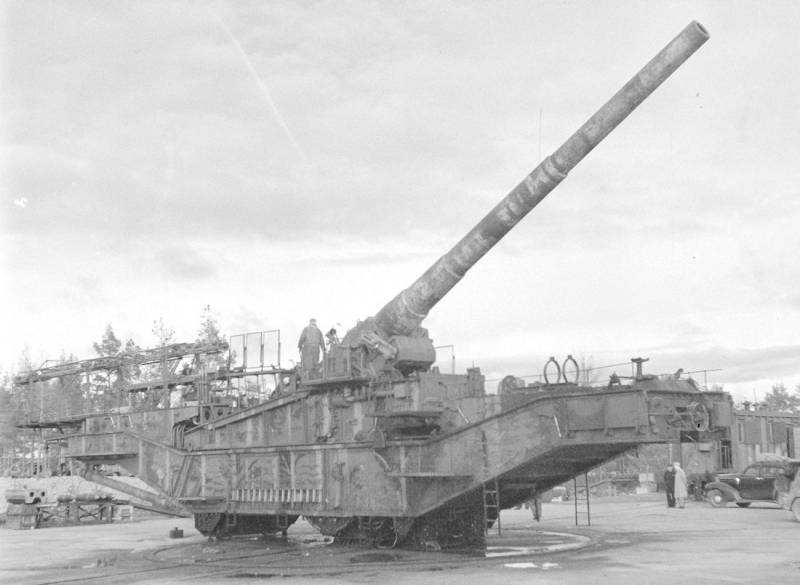
220/368 mm sub-caliber shells weighing 142 kg flew at distances from 87 to 97 km. The lateral deviation was 100-150 m, which was quite decent for such distances. In 1937, a 220-mm projectile weighing 140 kg (the pallet weighed another 112 kg) with a full charge of 223 kg of gunpowder showed an initial speed of 1390 m/s and a flight range of 120 km. That is, Soviet weapons engineers practically repeated the achievement of their German colleagues, but with a heavier projectile.
But the main advantage was that the barrel was not specially made (a 30-meter barrel was beyond the capabilities of the USSR industry at that time), but a regular naval gun barrel. With significantly greater survivability and mobility. Preference in the design of miracle shells was given to the “star-shaped” pallet. Guns with star trays had a small number of riflings (usually 3–4) of great depth. The cross-sections of the shell trays repeated the cross-section of the channel. In general, the result was rifled guns with rifled projectiles.
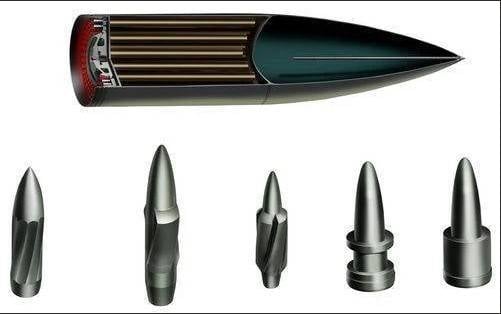
There were no more honest Trifonovs in the leadership of the Artillery Directorate, and work went on and appetites grew. The projects involved converting a 368 mm gun into a 305/180 mm gun, then into a 380/250 mm gun, followed by installation on the TM-1-14 railway platform.
Everything stopped in 1938, when the Art Directorate of the Red Army and (an unexpected move) the NKVD received a report compiled by a group of engineers entitled “Results of tests of rifled and polygonal projectiles in 1932–1938,” where these caring comrades very quickly substantiated the fact that all these tests are nothing more than puffing up one’s cheeks and spending money. And the results are no different from the results obtained at the Volkovskoe Field training ground back in 1856-1870. That is, all this time the artillery engineers were simply fooling everyone, engaging in fraud.
Indeed, the results of tests of polygonal guns in 1928–1938 coincided one to one with the results obtained at Volkovo Pole. The same picture was with rifled shells.
The Art Directorate turned a blind eye to these dances, but the NKVD “closed its shop.” Dozens of developers of the “miracle”weapons"were arrested and imprisoned, and work on super-projectiles stopped.
In general, the very idea of creating and using “super-weapons” was ineffective. Loading a gun with a rifled projectile in the field was just a quest for engineers; we’re not talking about calculations from ordinary people at all.
In addition, it was not worth talking about the accuracy of these projectiles: the probable circular deviation was many tens of meters, which could not be compensated by the power of the charge. The amount of explosive in a 140-kg 220-mm sub-caliber projectile was 7 kg. That is, the same amount as a high-explosive projectile for a 152-mm D-1 howitzer weighing 40 kg contained.
In general, the shooting accuracy of ultra-long-range guns was completely useless; they were only suitable for shooting at targets such as the city. The destructive effect of shells with a caliber of over 200 mm was somewhere in the middle between 76 and 122 mm shells of conventional guns.
The Germans, who started it all, took a slightly different path
By 1940, they had practically restored the “Kaiser Wilhelm Trumpet”, or as it was also called, the “Paris Gun” in the form of a 210-mm K12(E) railway installation, which began throwing high-explosive shells weighing 107,5 kg over a distance of 120 km.
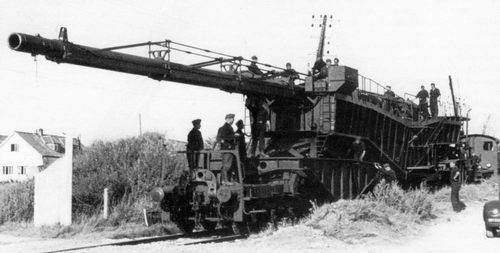
It is very logical that, having captured France, the Germans could not resist the temptation to start shelling Britain. Dover was in the crosshairs.
Especially for London, the Germans developed, manufactured and even managed to test an ultra-long-range finned high-explosive projectile. Weighing 140 kg, it flew out of the barrel at a speed of 1 m/s and could fly up to 850 km. Accuracy... however, we have already had a lot of “sad things to say”, let’s end the episode positively: the Germans did not have time to use a feathered projectile. They have more important tasks.
There was another “miracle weapon”, also a cannon on a railway platform, K5(E) with a caliber of 278 mm.
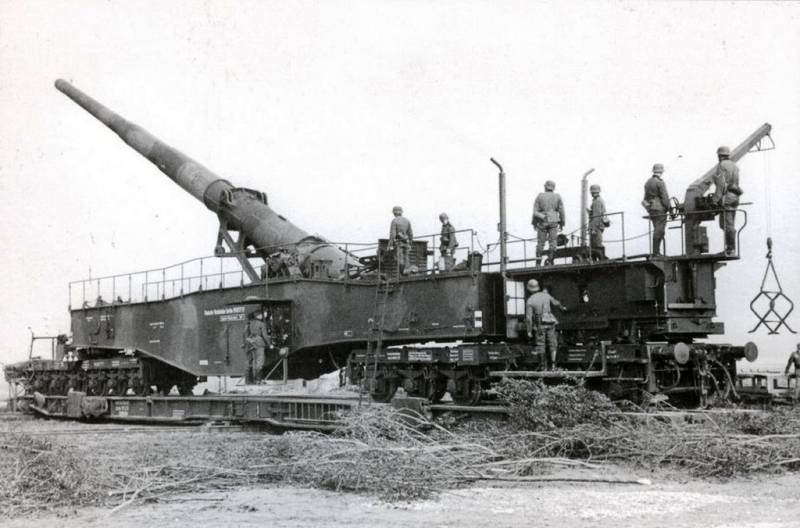
Here it was firing products (not quite shells) with a 280-mm caliber with rifling. The gun barrel and shells each had 12 rifling 6,75 mm deep. The ammunition was active-reactive Raketen-Granate 4341. These products weighed 245 kg and contained 17 kg of explosive. The initial speed of the ammunition was 1120 m/s and it could fly up to 87 km.
After the projectile left the barrel, the jet engine was turned on and ran for 2 seconds. The fuel used was 19,5 kg of diglycol gunpowder, which gave a very decent thrust of 2100 kgf.
The firing range made it possible from the territory of France (the coast from Calais to Boulogne) to reach coastal cities from Margate to Hastings and inland to Ashford.
The downside of the Raketen-Granate 4341 was that at its firing range the projectile fit into an ellipse of 2 x 1,5 km. That is, there was again no accuracy and we were talking exclusively about terrorist attacks on cities.
And there was also a design bureau in the glorious town of Peenemünde... In general, many things were created there aimed at the mass destruction of representatives of humanity. Including a 310-mm smoothbore gun with extra-long (more than 2 meters in length) finned shells weighing 136 kg. Such a projectile contained 25 kg of explosives, flew out of the barrel at a speed of 1 m/s and flew at a distance of up to 420 km.
The production of seven such guns began, but only two took part in the fighting. Both guns fired at the advancing Allies in the battles near Bonn.

But the range of 87 km was not the limit. A new barrel and an extra-long sub-caliber projectile for it were designed at the rocket and artillery design bureau at the Peenemünde training ground. The barrel had a smooth bore of 31 cm caliber. The length of the 31-cm Spreng-Granate 4861 high-explosive fragmentation sub-caliber projectile was 2012 mm, weight 136 kg. The projectile contained 25 kg of explosive. The diameter of the active projectile is 120 mm.
The projectile was equipped with a pallet with centering belts. After the projectile left the channel, the pan was separated. In flight, the projectile was stabilized by four tail stabilizers. With a charge of 248 kg, the initial speed was 1420 m/s, and the maximum range was 160 km.
The production of seven smooth-bore 31-cm guns began, of which two were completed: one by Krupp, the other by Hanomag. Both guns fired at the British and Americans in the battles of Bonn.
During live firing in July 1944, the guns showed an initial speed of 1 m/s and a range of 130 km. At this range, the dispersion was 50 m along the range, and 900 m laterally. That is, again the accuracy made it possible to shoot either at large targets such as cities, or simply at areas where manpower and equipment were concentrated.
If we look up all the statistics of German artillery fire in Great Britain for the years 1940–1944, then the Germans fired 2226 shells into the Dover area. Losses of the British army and population - about 200 military personnel and civilians, plus minor damage to infrastructure.
Well, then you remember, the era of the forerunners of cruise and ballistic missiles, the V-1 and V-2, began, which turned out to be much more effective weapons than the super-projectiles of super-guns.

What does the new century have in store for us?
For some reason, the 21st century was no exception to the rule, and work on superprojectiles continued. But already in a new form, because scientific and technological progress occurred, which put satellite constellations into orbit, giving a new direction to development. And projectiles appeared, corrected by GPS signals. Experimental work has shown that the CEP of projectiles, which are adjusted based on satellite signals, does not exceed 10 meters. The artillerymen of the last century could only dream of such an indicator.
And there was another return of superguns.
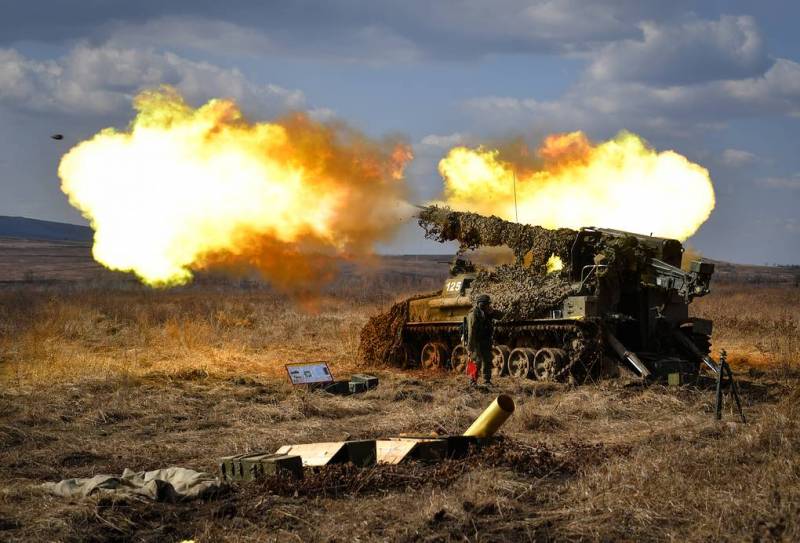
Probably the most successful projectile is the product of OTO Melara (part of Leonardo) in collaboration with Diehl Defense. The companies are well-known and highly respected, what can I say. They know how.
Their creation Leonardo “Vulcano” (or OTO “Vulcano”) is a whole family of high-precision sub-caliber finned high-explosive fragmentation artillery shells. But the American M982 Excalibur from Raytheon Missile Systems and BAE Systems Bofors is also quite good.
“Vulcan” exists in three calibers: 76 mm and 127 mm – unitary for naval guns, and 155 mm – with a modular charge for land artillery. Moreover, for howitzers with different barrel lengths, the Vulcan has a different number of modules. The declared range of the projectile is from 50 to 70 km.
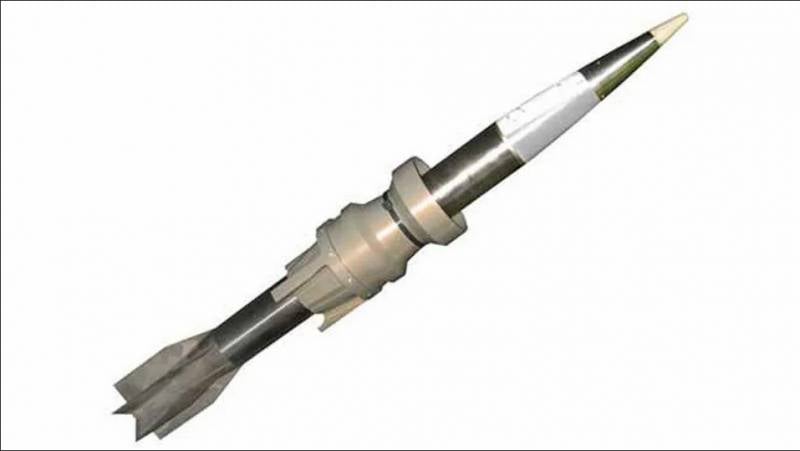
"Vulcan" is very similar in appearance to a conventional anti-tank sub-caliber projectile. When fired, the sabot and shell are discarded, revealing the tail stabilizer and wing. True, some real experts have doubts about the declared amount of explosives in the projectile. And it says as much as 5 kg. Such an artillery specialist as Alexander Shirokorad openly in his articles questions the presence of so many explosives, because there is simply no room in a 127-mm sub-caliber projectile! It is also crammed with various electronics, without which a guided projectile is not a projectile at all.
A standard 122-mm howitzer caliber projectile has up to 4 kg of explosive inside, but here there are five... Very strange. But, of course, shells of this class, equipped with semi-active seekers, are very accurate. The CEP is no more than 3-4 meters, and when the target is illuminated with a laser, it can even hit targets in motion. The same is true for Excalibur.
But these shells have both pros and cons.
On the plus side, it is worth noting that the projectile is much more difficult to detect and track than the same missile. Yes, there are counter-battery radars, but they are not a panacea, and are currently a very easy target for aircraft with anti-radar missiles.
But in our age, the guided projectile has a very tough rival - the kamikaze drone. The same "Shahed-136" that "Geran-2" carries the same 5 kg of explosives. Yes, it flies slower than a projectile, but it is even more difficult to detect it even with the KBS radar. What to say about FPVdrones. But the price of the drone is much less than that of the same Vulcan or Excalibur, the cost of which ranges from 100 to 300 thousand dollars, depending on the modification. Naturally, this cannot be compared with tens of thousands of dollars for a kamikaze drone, I emphasize, with the same explosive charge as the super-precise Vulcan. "Excalibur" carries 22 kg of explosives inside, so it is not entirely correct to compare it.
In addition, unlike conventional projectiles, high-precision and super-long-range projectiles are susceptible to damage from electronic warfare. GPS is a very useful tool, but satellite signals can be jammed, and then such projectiles will be of little use.
The question of what is more effective, 1 Vulcan-type projectile, 10 Shahed-136-type drones or 100 conventional caliber projectiles is still looking for an answer on the territory of Ukraine, where all types of these ammunition are involved in the SVO.
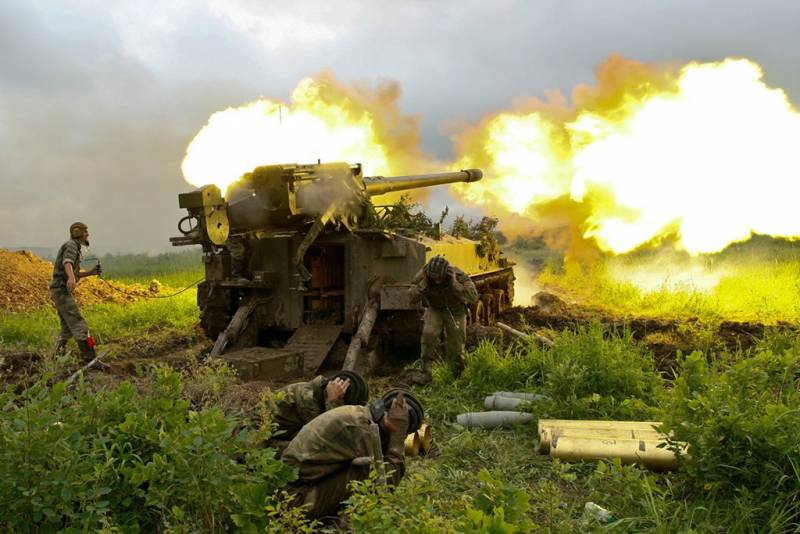
But ultra-long-range projectiles on the ground have another serious competitor - MLRS, capable of hitting targets at a distance of up to 120 km, and with the help of adjustments based on satellite signals, up to 200 km.
And at sea things are no better for super-shells
American destroyers, including the Zamvolts, have 155-mm AGS (Advanced Gun System) artillery mounts. Modern firing systems, 127 mm caliber, 62 caliber barrel length, water-cooled barrel, with all kinds of guidance systems.
For these installations they developed a simply gorgeous LRLAP projectile.

The projectile is active-reactive, already 2,24 meters long. LRLAP weight 104 kg, explosive weight 11 kg, rocket motor fuel weight 11,7 kg, retractable wings and stabilizers. The firing range of this projectile is 154 km; naturally, there is GPS correction. CEP 20-30 meters. Simply an excellent performance at this distance. But the installation can also fire conventional 155 mm shells. But at 40 km.
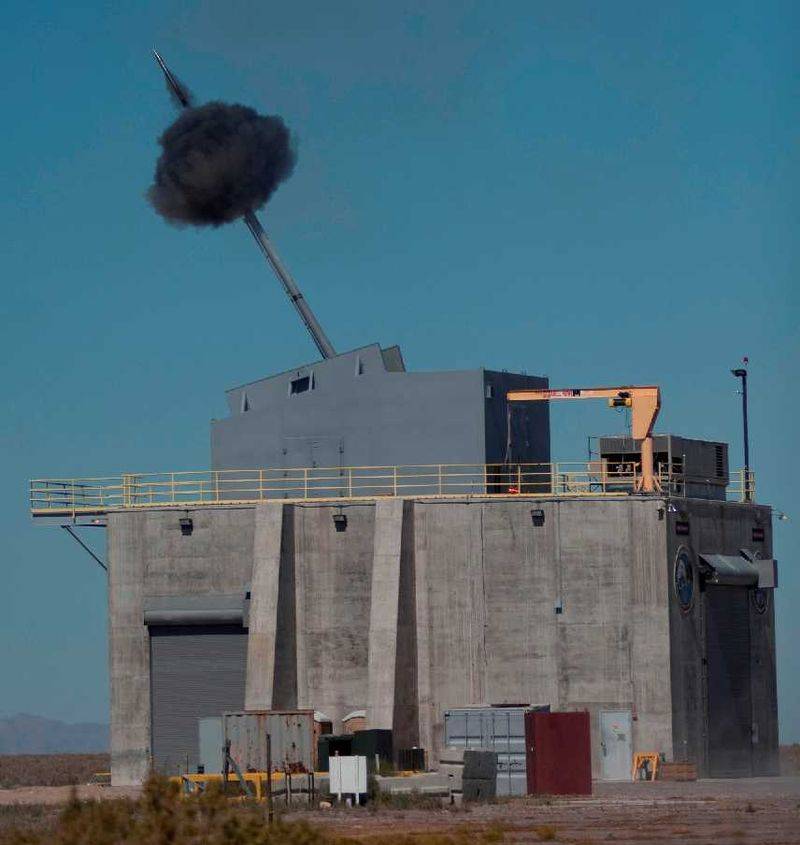
During testing in July 2013, 4 shots were fired in field conditions and from a ground machine. All 4 projectiles confidently captured the satellite signal, corrected the trajectory and successfully hit the target at a distance of 83 km.
What is the problem? In price! One shot of the Zamvolta cannon costs 2 (TWO) million dollars! For comparison, a Tomahawk Block IV missile with a high-explosive fragmentation warhead weighing 340 kg flies to a distance of 1 km for half that amount. That is, for a million dollars.
Yes, a cruise missile is easier to track and destroy by air defense means than such a projectile. But the effect of use in case of a hit will be greater; after all, 11 kg versus 340 somehow does not look confident.
This is probably why the admirals fleet The United States ordered a total of 100 LRLAP shells for six Zamvolt guns and continued to study the possibility of firing conventional 127 mm shells.
What can be said as a result?
105 years ago, on the battlefields of the First World War, it was experimentally discovered that cannons could fire over vast distances, 100 km or more. Many countries tried to increase the experience gained during the First World War in order to provide their artillery with an advantage.

They invented several dozen artillery systems and hundreds of super-shells. But not a single project produced any decent results. The result could be considered a “gun + projectile” system, which would be effective in combination with the characteristics “range + accuracy + cost”.
Ultra-long-range guns turned out to be completely ineffective in terms of accuracy and cost. And the appearance of cruise missiles and kamikaze drones generally negated all the achievements of long-range artillery.
The projectile has one quality left that drones do not have - it flies more stealthily and quickly than drones, cruise and tactical missiles. It is much more difficult to intercept and destroy. But in other respects, the projectile, alas, loses to cheaper competitors.
Speaking about guns whose firing range exceeds 100 km, we must admit that today these systems have practically lost out to drones and missiles. And there is no point in continuing work on creating artillery systems that fire at a distance of more than 100 km.
However, the results of the work of Russian gunsmiths showed the pointlessness of ultra-long-range artillery systems back at the end of the 19th century. And in the 20th century, Soviet gunsmiths only confirmed these works with their experiments. The 21st century has shown the complete advantage of missiles and drones when working against targets at long distances, but from time to time information appears in the press about the modernization of old Soviet artillery systems such as the same “Hyacinth”. The matter is meaningless and merciless, not worth the effort.
Information